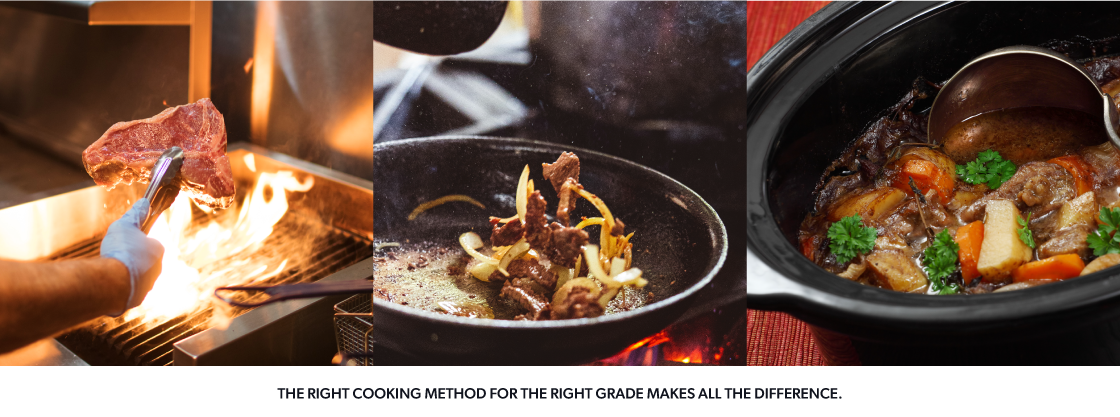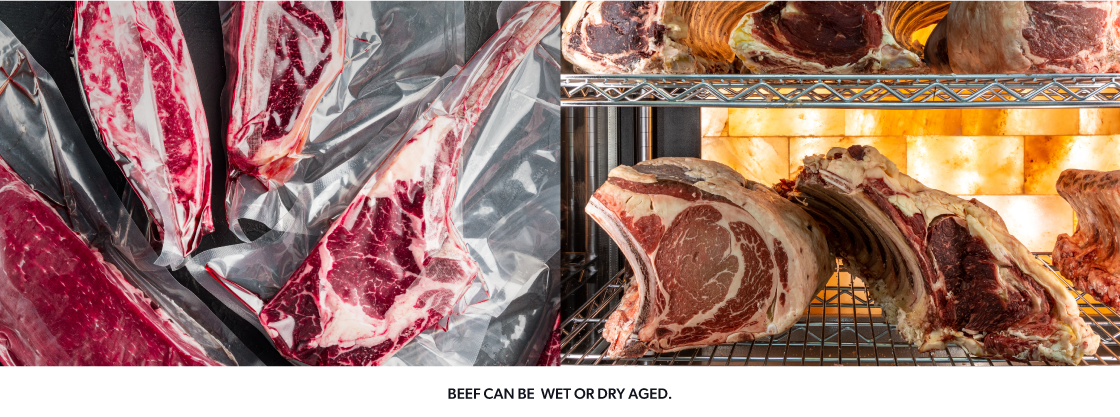As a restaurant owner, the quality of the beef you serve plays a pivotal role in defining your establishment’s culinary reputation. Understanding beef grading and how it influences your menu offerings, especially in relation to the method of cooking and the aging process, is crucial. This guide aims to help you navigate these considerations, ensuring that you make informed decisions that enhance your dishes and delight your customers.
Understanding Beef Grading

Beef grading is a classification system that assesses the quality of beef based on factors like marbling (the amount of intramuscular fat), maturity, firmness, and texture. In the United States, the USDA grades beef as Prime(Canada Prime), Choice(Canada AAA), or Select(Canada AA), with Prime being the highest quality, featuring abundant marbling, and Select having the least. Marbling is key because it contributes to the beef’s flavor, juiciness, and tenderness.
Choosing the Right Grade for Cooking Methods

**Prime Beef**: Due to its high marbling, Prime beef is ideal for dry-heat cooking methods such as grilling, broiling, or roasting. These methods allow the fat to render and permeate the meat, enhancing its flavor and tenderness. Prime cuts are perfect for high-end menu items where taste and texture are paramount.
**Choice Beef**: Choice grade offers moderate marbling and is versatile across both dry and moist heat methods. It’s suitable for grilling, roasting, and also for slower cooking methods like braising. Choice beef provides a balance between quality and cost-effectiveness, making it a popular option for a wide range of dishes.
**Select Beef**: With minimal marbling, Select beef is leaner and often benefits from moist heat cooking methods, such as braising or slow cooking, to maintain tenderness. It’s an economical choice for dishes where beef is not the sole star, like stews or curries.
The Benefits of Aging Beef
 Aging beef is a process that enhances its flavor and tenderness. There are two main methods: dry aging and wet aging. Dry aging involves hanging beef in a controlled, cool, and ventilated environment, allowing it to naturally tenderize over time. This process concentrates the flavor but results in some weight loss due to moisture evaporation. Wet aging, on the other hand, involves vacuum-sealing beef in plastic and aging it in its own juices. It tenderizes the meat without weight loss, but the flavor profile is less intense compared to dry-aged beef.
Aging beef is a process that enhances its flavor and tenderness. There are two main methods: dry aging and wet aging. Dry aging involves hanging beef in a controlled, cool, and ventilated environment, allowing it to naturally tenderize over time. This process concentrates the flavor but results in some weight loss due to moisture evaporation. Wet aging, on the other hand, involves vacuum-sealing beef in plastic and aging it in its own juices. It tenderizes the meat without weight loss, but the flavor profile is less intense compared to dry-aged beef.
Aging beef, especially dry aging, adds to the cost due to the time required and the reduction in weight, but the result is a premium product that commands higher menu prices. Offering aged beef can significantly elevate your restaurant’s menu, appealing to discerning customers seeking a superior dining experience.
How Aging Affects Price
Aged beef, particularly dry-aged, is more expensive due to the intricate process and the loss of product through moisture evaporation. However, the unique flavor and tenderness of aged beef allow for a higher price point on your menu, justifying the initial investment. It’s a value addition that can set your restaurant apart and create a memorable dining experience.
In conclusion, selecting the right beef grade and considering the aging process are crucial decisions that impact your menu’s quality and cost. By understanding these elements, you can tailor your beef selections to suit various dishes and cooking methods, ensuring that your offerings meet customer expectations and enhance your restaurant’s reputation.